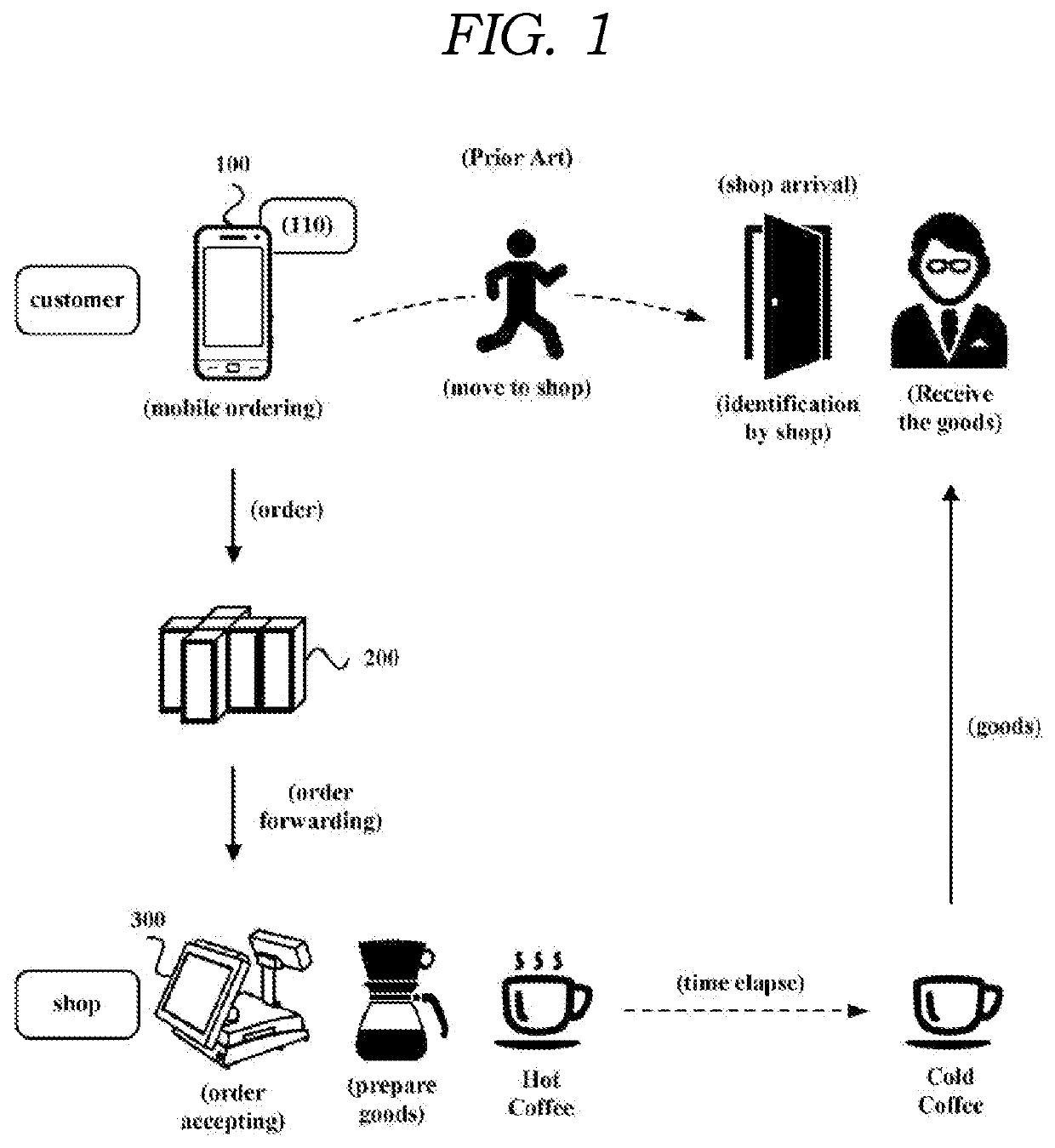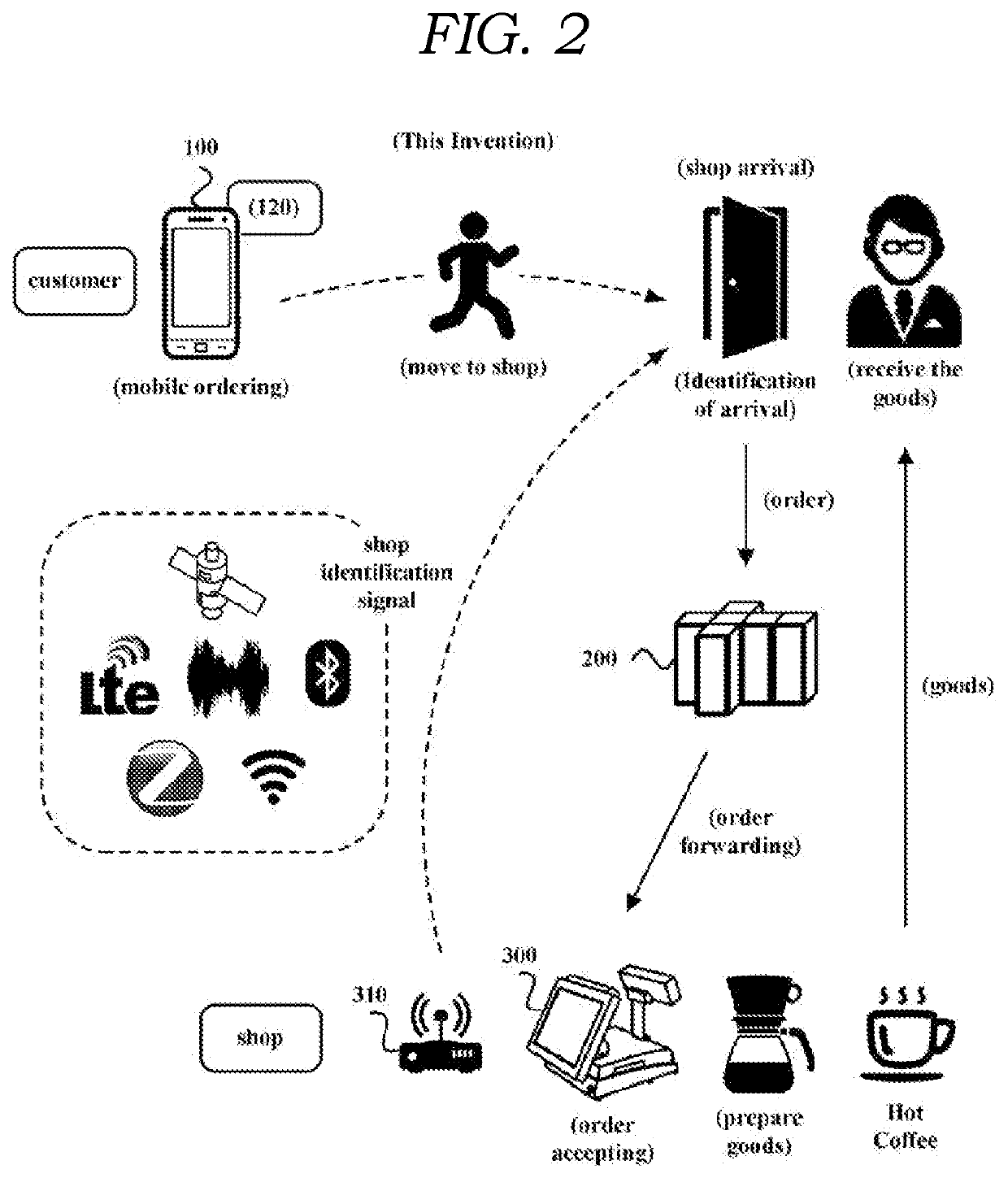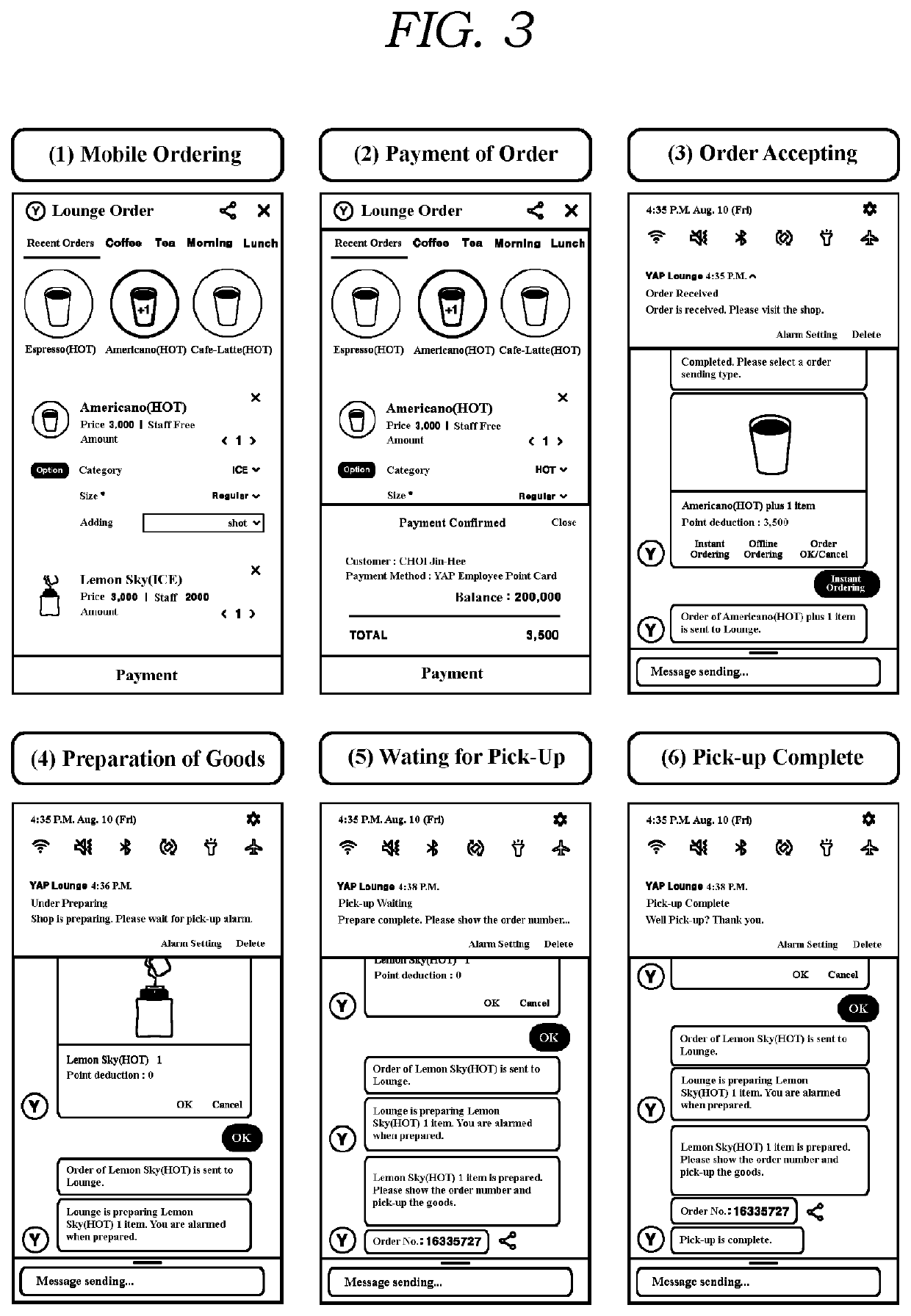Qos-based mobile order processing method using shop arrival identification
a mobile order and identification technology, applied in the field of qos-based mobile order processing, can solve the problems of reducing the quality of goods, limiting the benefit of new technologies, and varying the time interval, so as to improve user convenience, simplify app operations, and ensure service quality
- Summary
- Abstract
- Description
- Claims
- Application Information
AI Technical Summary
Benefits of technology
Problems solved by technology
Method used
Image
Examples
first embodiment
[0075]FIG. 6 is a flowchart showing receiving and processing a mobile order in a shop in the present invention.
[0076]Steps (S311, S312): As the order management server (200) forwards the mobile order data in step (S180), the shop terminal (300) installed in the shop where the customer arrives receives the mobile order data in step (S311). Accordingly, the shop terminal (300) identifies the time when the shop terminal (300) receives the mobile order data (hereinafter, “mobile order arrival time”).
[0077]Steps (S313, S314): The shop terminal (300) obtains the customer identification information and the ordered-goods information with respect to the mobile order from the mobile order data. That is, the shop terminal (300) identifies who has ordered which goods.
[0078]Then, the shop terminal (300) accepts the mobile order by inserting the mobile order into a shop order list based on the mobile order arrival time between a series of offline orders which are accepted at the shop counter. Tha...
second embodiment
[0079]FIG. 7 is a flowchart showing receiving and processing a mobile order in a shop in the present invention.
[0080]Step (S321): As the order management server (200) forwards the mobile order data in step (S180), the shop terminal (300) installed in the shop where the customer arrives receives the mobile order data in step (S321).
[0081]Step (S322): The shop terminal (300) obtains the customer identification information and the ordered-goods information with respect to the mobile order from the mobile order data. That is, the shop terminal (300) identifies who has ordered which goods.
[0082]Step (S323): The shop terminal (300) accepts the mobile order by placing the mobile order in the front end of a shop order list so that the mobile order has higher priority than a series of offline orders on pending which are accepted at the shop counter. The shop terminal (300) allows the mobile order to be serviced with the highest priority by arranging the mobile order in the front end of a sho...
third embodiment
[0083]FIG. 8 is a flowchart showing receiving and processing a mobile order in a shop in the present invention.
[0084]Step (S331): The mobile agent unit (120) receives a mobile order from a customer and then generates the mobile order data in step (S110), at which the mobile agent unit (120) identifies the time when the mobile agent unit (120) generates the mobile order data (hereinafter, “mobile order generation time”). Then, the mobile agent unit (120) inserts the mobile order generation time into the mobile order data. The mobile order generation time corresponds to a time point when the customer performs the mobile order operation on his smart terminal (100).
[0085]Step (S332): As the order management server (200) forwards the mobile order data in step (S180), the shop terminal (300) installed in the shop where the customer arrives receives the mobile order data in step (S332).
[0086]Step (S333): The shop terminal (300) obtains the customer identification information, the ordered-g...
PUM
 Login to View More
Login to View More Abstract
Description
Claims
Application Information
 Login to View More
Login to View More - R&D
- Intellectual Property
- Life Sciences
- Materials
- Tech Scout
- Unparalleled Data Quality
- Higher Quality Content
- 60% Fewer Hallucinations
Browse by: Latest US Patents, China's latest patents, Technical Efficacy Thesaurus, Application Domain, Technology Topic, Popular Technical Reports.
© 2025 PatSnap. All rights reserved.Legal|Privacy policy|Modern Slavery Act Transparency Statement|Sitemap|About US| Contact US: help@patsnap.com



